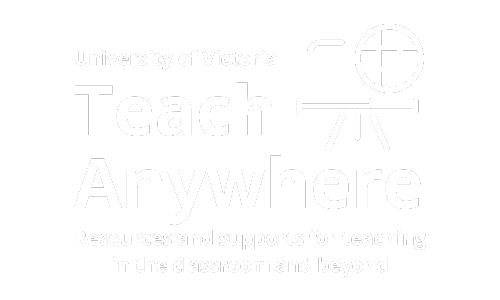How CEL benefits community
Students can make a vital impact on the community by contributing their skills, enthusiasm and knowledge to community projects and organizational needs. The community also plays a vital role in enhancing student learning experiences.
Creating relationships with individuals and organizations in the community can be both exciting and overwhelming. As you go through this page, you might ask yourself why you want to partner with certain organizations. Be mindful of organizations that may be overburdened with requests from post-secondary to host students and/or collaborate on projects.
If you would like help establishing relationships in the community or learning about existing relationships and community requests, please contact the CEL Office. You can also participate in other learning opportunities about experiential learning.
Further training
- Experiential learning workshops
(filter by provider: LTSI) - Instructor Guide to Experiential Learning
Spectrum of Engagement
The Spectrum of Engagement illustrates the levels and types of engagement and the corresponding levels of reciprocity between students, instructors and community members. The level of engagement is negotiated between students, instructors and community partners according to their needs, expectations, and capacity.
8 key principles in building CEL partnerships
1. Understand community interests
Typically speaking, a community partner will have a clear idea about the areas and ways in which they want to collaborate. In some cases, they may seek your expertise and experience in exploring possibilities. Regardless, the idea is to develop learning opportunities that connect intended learning outcomes and community interests.
If a community interest is not an appropriate match for your course, contact the CEL Office as they can connect that community member with another instructor and can also support you in finding a better fit.
2. Build trust
Be aware of the history of the community-university partnership. Open, supportive communication is fundamental to avoid (and/or resolve) past, present and future mistakes. Remember to listen and focus on mutual benefit!
3. Design projects that are creative and flexible
Balance both community engagement and student learning goals; respond to the practical needs of the community partner through projects that also provide meaningful learning opportunities for students.
For example, it may be that the community partner needs support with a mundane task. Work with the community partner to explore supplemental activities that create a more fulsome and rewarding learning experience.
4. Set realistic project and learning goals
The general recommendation for course workload is about 10 hours per week; or 2-3 hours outside of class for each hour of classroom learning. Set learning and community goals that are manageable for your students within the time frame of your course, and clarify expectations for every step of the course. While experiential learning involves hands-on activities, unconventional time allocation (i.e. sometimes doing research or being in community on the weekends or in the evenings), and dedication to relationship and personal development, the workload should reflect that of other courses.
5. Adhere to research ethics protocols
UVic’s Ethics Office can help you navigate whether or not a course-based ethics application is required for the work that your students will do with community. Further, the Community Research Ethics Office promotes the four principles of Respect for Persons, Concern for Welfare, Concern for Justice, Respect for Community. Apart from our UVic ethics protocols, ask the community partner if they have any research protocols that need to be followed. Make sure that your students are aware of, and know how to adhere to, the community and UVic protocols.
Depending on the nature of the project, students may also benefit from taking the TCPS2 Course in Research Ethics training.
6. Ensure continuity
Lasting partnerships yield multiple projects over time that can result in a cumulative impact on the community. They also allow for the trust, experience and mutual understanding that ease project planning and success.
7. Assess impacts
Evaluating the relationship and project advancement can be done in the midst of a project for the purposes of implementing any mid-course corrections, but it also should be done once the project is finished to determine its final impact. This can be in the form of a final written evaluation that an educator asks the community partner to submit or an informal (but documented) conversation. Either way, specific questions regarding every phase of the project – from the usefulness of project design, to student conduct, to the helpfulness of the final results – can inform your practice in teaching with community. Be mindful of the time required of community partners when designing impact evaluation tools.
8. Develop reciprocity
“No more chocolate!” – from a community partner when asked what would they like in return or as a gift for their contribution to student learning.
Reciprocity is mutually developed in a relationship, with the idea that each partner is mindful of and responsive to each other’s efforts, challenges and contributions.
